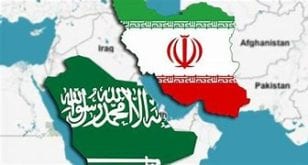iranintl – Faced with an apparent financial crunch to subsidize bread, the Iran is gradually raising prices, a move that can have both political and inflationary repercussion.
To avoid public blame and anger the government is trying to redirect the responsibility to provincial officials, although the central government would remain the main decision maker.
Iran’s economy minister Ehsan Khanzoudi said on Wednesday that provincial authorities are now authorized to decide the prices of various types of bread, always set nationally before, “based on local circumstances”.
Earlier in September Government Spokesman Ali Bahadori-Jahromi had said in a televised interview that “the government has no plans to increase the price of bread” but added that provincial authorities in the future would be deciding the price of bread with the “approval of the interior ministry.”
Khandouzi also confirmed that provincial authorities need the approval of the interior ministry for increasing the price of bread in their respective provinces and added that the government will “specifically supervise bread prices.”.
Since Iran reduced subsidies for food and medicine last year, the government had repeatedly vowed not to increase bread prices. In May 2022 Khandouzi had stated that an increase in the price of bread was “the President’s redline” and other officials had repeated his promise of keeping the price of bread steady.
The government of President Ebrahim Raisi appears to be delegating the pricing of bread to provincial authorities to minimize criticism of its dismal economic performance including skyrocketing food prices analysts say. Prices rose as much as 100 percent in the past year for ordinary food items.
In early August after weeks of contradictory statements and denials, the government finally confirmed that bread prices had increased in 13 provinces by around 40 percent.
Analysts say the capital Tehran and Tehran Province, the most populous in the countrywith a population of over 13 million, were spared so far for political reasons including possibility of protests.
In the past few days, the price of Sangak, a popular flatbread weighing around 450g, rose by 50 percent from 20,000 rials to 30,000 (around 7 cents) in Tehran and surrounding regions due to a drop in the flour subsidy allocated to bakeries.
Bread prices in Iran might seem cheap by world standards, but any increase in the price of bread can hugely affect impoverished households given that bread is the main staple in Iranians’ diet.
Iranians are the second biggest bread consumers in the world with annually 160kg (350 lb) per person after Turkish consumers with 199.6 kg (440 lb) per person.
Bread consumption in Iran has risen by ten kilos in the past ten years due to higher cost of living that has made rice less affordable to many Iranians, particularly the three lowest-income percentiles.
Iran’s food inflation rate, according to World Bank figures in June, stood at 78 percent, placing the country in the fifth place in the world after Venezuela (426%), Lebanon (350%), Argentina (115%), and Zimbabwe (102%). In April Iran had ranked fourth among the countries with the highest food inflation with a food inflation rate of 71 percent.
On May 1, 2022, the parliament voted to allow the government to scrape an annual $10-14 billion subsidy for essential food and medicine despite warnings of higher inflation, which already stood at around 40 percent, and hardship for the most vulnerable. This led to a ten-fold increase in the price of flour.
The government of President Raisi then introduced a “smart plan” to continue the bread subsidy and issued digital cards that have to be used at the time of purchase, arguing that the plan would prevent the smuggling of subsidized flour and bread to neighboring countries where they sold at much higher prices.
Earlier in June the Bakers’ Union revealed that subsidized flour allocations to some bakeries had dropped by more than half their quota. Bakers say despite the lower cost of subsidized flour, other production costs (labor, other ingredients including yeast and oil) have increased, and their sales have dropped so much in the past year that they are not able to make a profit even by using subsidized flour.
 Shabtabnews In this dark night, I have lost my way – Arise from a corner, oh you the star of guidance.
Shabtabnews In this dark night, I have lost my way – Arise from a corner, oh you the star of guidance.



